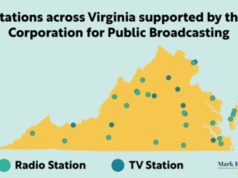Today we take on a macro-level cursory examination of population growth trends to see where seats will be gained, lost, or adjusted in the upcoming redistricting to be considered in an April special session. We expect that Northern Virginia exurbs gain three seats (two in the west and one in the south) at the expense of Southwest, Hampton Roads, and Southside. Metro Richmond and the Valley remain even.
Using this baseline understanding we can move on later to more granular analysis. This isn’t news to anyone who has paid attention to population shifts, nor do we have any insights beyond what we can see on the population spreadsheet, but it is useful to see now that official data is out.
It’s important to remember that redistricting is less a game of population numbers and more a game of seats available. In conceptualizing the population shifts and how they affect our current House districts, I have grouped our current House districts into groups and converted their population deficits and surpluses to seats to determine whether seat elimination or adjustment is necessary.
There are two fundamental outcomes for a district after redistricting. It is either adjusted or eliminated (moved somewhere else). It is theoretically possible to redistrict the entire Commonwealth without “eliminating” a seat by simply stretching and compressing districts as needed. This brings massive ripple effects that run for miles in areas with significant population changes. As a matter of convenience, it is far less disruptive in cases where five districts need to be carved out of three to drop two districts in from a losing area. This has previously happened to the 21st and 86th Districts, which were lifted and dropped whole instead of having dozens of surrounding districts adjusted.
Since House districts are smaller and more granular, they carry a higher propensity to be moved wholesale than Senate districts, which can absorb more growth and loss due to their smaller size and do not necessarily need to be moved from region to region so often.
Full regional analysis below the fold.
Northern Virginia needs to gain two seats. Within Northern Virginia, we can break Northern Virginia into three rings. The first ring of the inner suburbs needs to give up .26 of a seat, the second ring of Fairfax County outside the Beltway needs to give up .02 of a seat, and the third ring of Loudoun and Western Prince William districts need to gain an astonishing 2.24 seats. These three rings add up to exactly 2.00. A net of .24 (+.02-.26) seats need to be pulled out from Fairfax into Loudoun and Prince William, but two more full seats have to be found.
This spells the most danger for those in the ring directly outside the Democratic areas of inner Fairfax, Arlington, and Alexandria. Their districts will track west into Republican areas of western Fairfax. Democrats in Districts 36 (Mark Keam), 37 (David Bulova) and 41 (Eileen Filler-Corn) face the most challenging prospects as they have no Democratic buffer protecting them from Republican precincts.
Northern Virginia is unable to expand their seats south as the southern exurbs have also grown ahead of population, and it would be nearly impossible to draw the existing Prince William and Loudoun seats westward without shifting them completely from their current bases. These factors necessitate that the two seats will be taken whole from Southwest and Hampton Roads.
These new seats would take Districts 13 (Bob Marshall), 32 (Tag Greason), and 33 (Joe May) and add two seats among them. Also affected will be District 34 in Fairfax County (Barbara Comstock), who is under population and will take up some of the slack in District 32.
It isn’t difficult to predict who is likely to have their seat taken away sent north. In Hampton Roads, District 87 (Paula Miller) is hemmed in by majority-minority districts protected by the Voting Rights Act. Her seat is almost certain to be eliminated. In Southwest, District 2 (Bud Phillips) is nearly 11,000 residents under population, making his seat the most underpopulated Democratic district. It is less likely, but still conceivable, that the other remaining Southwest Democrat in District 3 (Joe Johnson) would be targeted.
The next set of adjustments is more complex. The southern exurbs of Northern Virginia are the central part of the Urban Crescent, stretching from southern Prince William into Hanover County and covering areas like Culpeper and Stafford will need to gain 1.03 seats. The Richmond Suburbs to the south need to gain .61 of a seat. The suburbs Richmond City-based seats need to lose only .32 of a seat, leaving a net of only .29 that the Richmond Suburbs still need to gain if the City seats are pulled out into the Suburbs. To the east, the districts surrounding the Chesapeake Bay are short .60 of a seat, and to the south the two Southside regions are short .74 of a seat. This makes a clean break like the two seats filling the Northern Virginia hole difficult.
Combined, the Southern Exurbs and Richmond Suburbs need to gain 1.61 seats. I speculate that Chesapeake Bay districts can be pushed west and poured into the Southern Exurbs, which leaves one full seat to fill. District 100 (Lynwood Lewis) can pick up parts of the Northern Neck and Middle Peninusla, pushing the Middle Peninsula-based 98th District (Harvey Morgan) into the Richmond Suburbs’ 97th District (Chris Peace). If the entire Chesapeake Bay loss of .60 seats is taken up by the Southern Exurbs and Richmond Suburbs that still leaves a 1.01 seat gap. The Southern Exurbs/Richmond Suburbs can take .32 seats from Richmond City and are then left with a .69 gap, which will have to be taken up from Southside. Expect Districts 60 (Tommy Wright) and 63 (Rosalyn Dance) to track north into the southern Richmond Suburbs, and the remaining Southside districts to travel towards Interstate 95 (western half going east, eastern half going west).
Overall, on the macro level, we see a shift in power northward to Northern Virginia exurbs. The effects of this on such diverse issues such as transportation and education funding to health care and social issues will impact state politics for years to come.
Kenton Ngo can be reached at kenton@kentonngo.com. Follow him on Twitter.














